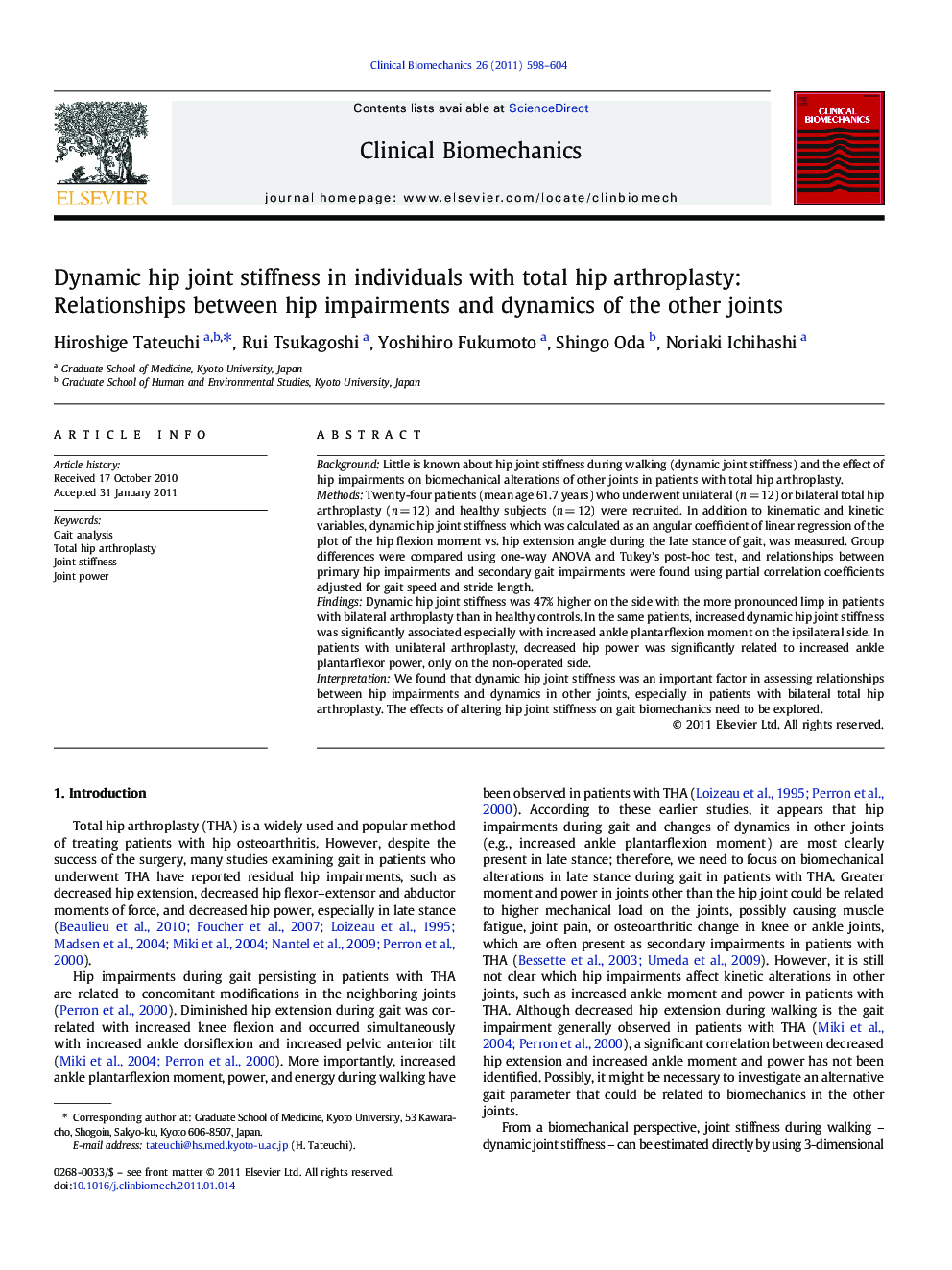| Article ID | Journal | Published Year | Pages | File Type |
|---|---|---|---|---|
| 4050580 | Clinical Biomechanics | 2011 | 7 Pages |
BackgroundLittle is known about hip joint stiffness during walking (dynamic joint stiffness) and the effect of hip impairments on biomechanical alterations of other joints in patients with total hip arthroplasty.MethodsTwenty-four patients (mean age 61.7 years) who underwent unilateral (n = 12) or bilateral total hip arthroplasty (n = 12) and healthy subjects (n = 12) were recruited. In addition to kinematic and kinetic variables, dynamic hip joint stiffness which was calculated as an angular coefficient of linear regression of the plot of the hip flexion moment vs. hip extension angle during the late stance of gait, was measured. Group differences were compared using one-way ANOVA and Tukey's post-hoc test, and relationships between primary hip impairments and secondary gait impairments were found using partial correlation coefficients adjusted for gait speed and stride length.FindingsDynamic hip joint stiffness was 47% higher on the side with the more pronounced limp in patients with bilateral arthroplasty than in healthy controls. In the same patients, increased dynamic hip joint stiffness was significantly associated especially with increased ankle plantarflexion moment on the ipsilateral side. In patients with unilateral arthroplasty, decreased hip power was significantly related to increased ankle plantarflexor power, only on the non-operated side.InterpretationWe found that dynamic hip joint stiffness was an important factor in assessing relationships between hip impairments and dynamics in other joints, especially in patients with bilateral total hip arthroplasty. The effects of altering hip joint stiffness on gait biomechanics need to be explored.
